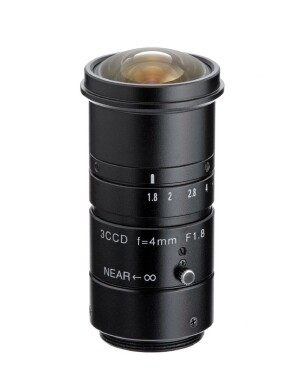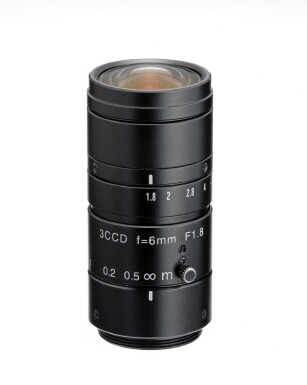Categories
Manufacturers
Reviews [more]
Information
Glossary
Aperture
In context of photography or machine vision, aperture refers to the diameter of the aperture stop of a photographic lens. The aperture stop can be adjusted to control the amount of light reaching the film or image sensor.
Charged Couple Device (CCD)
A charge-coupled device (CCD) is a sensor for recording images, consisting of an integrated circuit containing an array of linked, or coupled, capacitors. CCD sensors and cameras tend to be more sensitive, less noisy, and more expensive than CMOS sensors and cameras.
CMOS
Complementary metal-oxide semiconductor, is a major class of integrated circuits. CMOS imaging sensors for machine vision are cheaper than CCD sensors but more noisy.
Contrast
In visual perception, contrast is the difference in visual properties that makes an object (or its representation in an image) distinguishable from other objects and the background.
C-Mount
Standardized adapter for optical lenses on CCD - cameras. C-Mount lenses have a back focal distance 17.5mm vs. 12.5mm for "CS-mount" lenses. A C-Mount lens can be used on a CS-Mount camera through the use of a 5mm extension adapter. C-mount is a 1" diameter, 32 threads per inch mounting thread (1"-32UN-2A.)
CS-Mount
Same as C-Mount but the focal point is 5mm shorter. A CS-Mount lens will not work on a C-Mount camera. CS-mount is a 1" diameter, 32 threads per inch mounting thread.
Depth of Field (DOF)
The in-focus range of an imaging system. Measured from the distance behind an object to the distance in front of the object with all objects appearing in focus.
Field of View
The field of view (FOV) is the part which can be seen by the machine vision system at one moment. The field of view depends from the lens of the system and from the working distance between object and camera.
Focus
An image, or image point or region, is said to be in focus if light from object points is converged about as well as possible in the image; conversely, it is out of focus is light is not well converged. The border between these conditions is sometimes defined via a circle of confusion criterion.
Lens
A lens is a device that causes light to either converge and concentrate or to diverge, usually formed from a piece of shaped glass.
Machine Vision
MV is the application of computer vision to industry and manufacturing.
Normal Lens
In machine vision a normal or entrocentric lens is a lens that generates images that are generally held to have a "natural" perspective ( nearer objects appear larger, and farther objects smaller) compared with lenses with longer or shorter focal lengths. Lenses of shorter focal length are called wide-angle lenses, while longer focal length lenses are called telephoto lenses.
Optical Resolution
Describes the ability of a system to distinguish, detect, and/or record physical details by electromagnetic means. The system may be imaging (e.g., a camera) or non-imaging (e.g., a quad-cell laser detector).
Pixel
The individual elements in a digitized image array. AKA picture element.
Region of Intrest
A Region of Interest, often abbreviated ROI, is a selected subset of samples within a dataset identified for a particular purpose.
Structured Light
This is the process of projecting a known pattern of pixels (often grids or horizontal bars) on to a scene. The way that these deform when striking surfaces allows vision systems to calculate the depth and surface information of the objects in the scene.
Telecentric Lens
Compound lens with an unusual property concerning its geometry of image-forming rays. In machine vision systems telecentric lenses are usually employed in order to achieve dimensional and geometric invariance of images within a range of different distances from the lens and across the whole field of view.
Important Links
Bestsellers
- 6mm fl, F1.4, c-mount, 2/3" Kowa...
- 660nm Color Optical Bandpass...
- 25mm fl, F1.4, c-mount, 2/3"...
- 100mm fl, F2.8, c-mount, 2/3" Kowa...
- 12.5mm fl, F1.4, c-mount, 1" Kowa...
- 470nm Color Optical Bandpass...
- 635nm Color Optical Bandpass...
- 16mm fl, F1.4, c-mount, 2/3"...
- 6mm fl, Fujinon lens, F1.2,...


.jpg)

.jpg)
